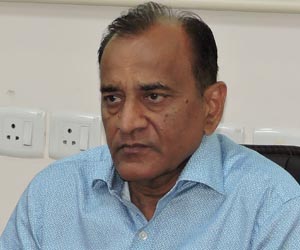Not many of us who periodically visit important temples in the country and pay our obeisance to the gods and goddesses consecrated there, bother to understand the architecture of those temples. If we were to do so, we would be left dazzled by the variety. Many such temples are even lessons in history as they have the imprint of the rulers of the time.
The architecture of Indian temples can be classified according to the regions the shrines are located in, and it has been largely influenced by the people who ruled over those places as well as the geographical conditions. Some of the important classifications are as follows:
Nagara Architecture: This is found mainly in temples situated in the regions between the Vindhya and the Himalaya. Many of these shrines are built entirely on a stone platform, with steps leading to the main entrance. The basic floor plan is square and the numerous layers of the spire are generally crowned by a notched ring stone (amalaka). Among the most spectacular examples of the Nagara architecture are to be seen in the Kandariya Mahadeva Temple in Khajuraho.
Dravidian Architecture: It is the most common style found in temples across the southern parts of India. The gopurams are everywhere, and some of the larger temples have more than one of these impressive gatehouses. While the common feature of the south Indian temples is the Dravidian imprint, the shrines also reflect the tastes of the rulers of the time—the Chola, Kakatiya, the Pandya, the Chera, the Rashtrakuta, the Kadamba, the Pallava, and more. A majority of the existing Dravidian temple structures are in Karnataka, Telangana, Andhra Pradesh, Kerala, and Tamil Nadu.
Badami Chalukya Architecture: Between 500 CE and 760 CE, the Badami Chalukyas pioneered the cave temple architecture on the banks of Malprabha river in today’s Karnataka. The region of Badami in northern Karnataka is a treasure house of this architecture. The villages of Aihole and Pattadakal (also called Raktapura, and having the Group of Monuments recognised as a UNESCO world heritage site) are home to some exquisitely designed temples in the Badami Chalukya style.
Gadag Architecture: Although part of southern India form of architecture, it reflects the Western Chalukya tastes and derives its name from the Gadag region in Karnataka. For close to one hundred and fifty years, from 1050 CE to 1200 CE, this style was immensely popular in the construction of temples. The Saraswati Temple in the Trikuteshwara Temple complex and the Amriteshwara Temple at Annigeri are shining examples of the Gadag architecture.
Kalinga Architecture: The most outstanding example of this eastern India style is the Jagannath Temple in Puri and the Konark Sun Temple. Incidentally, the Kalinga architecture flourished not only in Odisha but also in Andhra Pradesh.
Maru-Gurjara Architecture: The state of Rajasthan is the origin of this style, with the popular temples in Nagda being one of the most known shrines in this classification. The Sahasra-bahu temples in Nagda are a pair of late 10th century temples dedicated to Veerbhadra. While they share one platform facing the temple tank, one temple is bigger than the other; the bigger one has ten smaller shrines while the less -bigger temple has four small ones. But both have their own sanctum sanctorum and mandapa. Interestingly, while the name “Sahasra-bahu” means “one with thousand arms”, the locals have corrupted it to “saas-bahu” (mother-in-law & daughter-in-law)!
While there are temples and temples in India, and those in the southern parts of the country are especially magnificent in scale and structure, the temples of Himachal Pradesh and Uttarakhand, both known as Dev Bhumi, or Devi Bhumi (the Land of Gods), although relatively smaller in proportion, have a charm of their own. They demonstrate the Nagara architecture, although each shrine has its own sub-style. Himachal Pradesh has many temples made of stone or wood and stone. According to several scholars, the Lakshanadevi Temple of Brahmaur and the Shakti Temple of Chhatrahi (both in Chamba district), are the earliest instances of wooden temples. The surviving stone temples, dating to the seventh century, are to be found in Bilaspur, Kulu, Kangra and Shimla. The stone shrines too are in the Nagara style of architecture. Among the many temples, there is but one example of a monolithic shrines at Masrur in Kangra district.
On the other hand, there is a very different kind of shrine, the Sun Temple, in Palethi, in Tehri Garhwal in Uttarakhand. It has a sanctum and a gabled roof, now fallen, with a figure of Surya riding his chariot. The interior of the sanctum has a standing image of Surya flanked by his consorts.
The famous Kedarnath Temple is built in a conventional pre-medieval Katyuri spire format, an outgrowth of the Nagara style. The Katyuri clan ruled over what is today the Kumaon and Garhwal regions from 800 CE to 1100 CE. The Katyuri period is considered as a prosperous one for the region, both materially and culturally. At its peak, the kingdom extended from the borders touching Tibet in the north to the foothills of Uttarakhand, and from the Sutlej to Nepal. The reign was marked by the construction of several important shrines, and most of them were made of stones instead of bricks. The founder of the dynasty was Vashudeva Katyuri, who was a pious Shaiva. His successors continued with the good work that he had initiated in multiple fields. Of them, King Bhudeva was of a spiritual disposition.
The Kedarnath Temple rests on a platform that is around six feet higher than its adjoining area. The shrine is constructed from great, hunk stones that are interlocked with one another. No mortar or cement has been used in the construction. The main deity sits inside an octagonal structure of granite stones, with four doors leading to the garb griha. Two images of Shiva and Parvati stand facing each other, while Vishnu and Lakshmi are seated behind these two main deities. The collection of images is representative of both Shiva and Shakti who, between them, enable the creation of everything.
Image Source: https://www.sanskritimagazine.com/wp-content/uploads/2017/04/Hindu-Temple-Architecture-of-Ancient-India-990x510.jpg











Post new comment